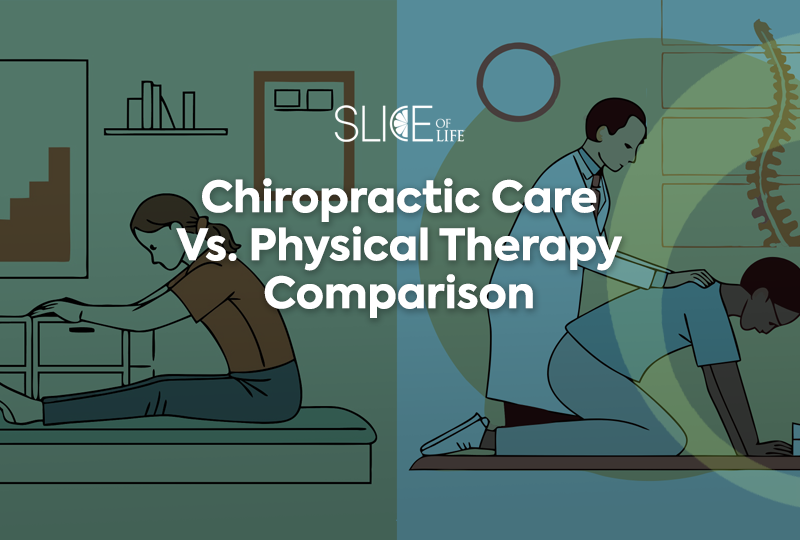There is a fair degree of overlap between the intentions and effectiveness of chiropractic care and physical therapy. It isn’t uncommon for people with an interest in studying physical therapy to develop a passion for Chiropractic, for example. But it begs the question, what really is the difference, and when should one discipline or the other be utilized? Healthline breaks down the confusion in their article “Physical Therapy (Physiotherapy) or Chiropractic Care? How to Know Which One You Need”.
Both Chiropractic and physical therapy (PT) manage and treat pain and stiffness throughout the body, practiced by licensed professionals with years of dedicated education in the sciences and arts of their profession. They both seek to alleviate discomfort noninvasively without surgery or medication. Often, they use manual or hands-on therapy to target a particular condition, and in fact, both disciplines can be used individually or concurrently to care for some conditions. Wellness plans with recommended home exercises are often used in both, and both practitioner types will evaluate symptoms by recording health history, performing exams and ordering tests, as appropriate.
Differences between Chiropractic and PT
The aforementioned Healthline article serves as a good jumping-off point to introduce this topic. However, it does contain some misconceptions or slight misunderstandings about Chiropractic that we will correct here. To begin to understand the fundamental differences between the two practices, let’s look at the definitions of each as provided by some of their leading professional bodies.
“Chiropractic is a health care profession that focuses on disorders of the musculoskeletal system and the nervous system, and the effects of these disorders on general health,” states the American Chiropractic Association.
Chiropractic indeed has a primary focus on spinal health, and for Life University (Life U) in particular, we embrace a philosophy of vitalistic health care in which chiropractors seek to remove interferences that allow for the self-healing nature of the body to take place.
“Physical therapy is treatment provided by a physical therapist or physical therapist assistant that helps people improve their movement and physical function, manage pain and other chronic conditions, and recover from and prevent injury and chronic disease,” notes the American Physical Therapy Association.
In practical terms, often people turn to PT because they received a significant injury or have experienced a noticeable loss in mobility. Ideally, Chiropractic is designed to be more preventive when implemented with regularity. Also, physical therapists do not perform adjustments to remove subluxations (interferences found in the body), which is a key difference. Instead, they assist with targeted stretches and exercises to improve mobility. Both use different kinds of equipment for different things, though it might be more common at a chiropractic office to simply receive an adjustment on a chiropractic table as opposed to working with a PT on a series of exercises.
Commonly, prospective patients may contact a PT office after an accident, injury, surgery or worsening health condition. Consequently, chiropractic care can also be therapeutic in many such cases. Similarly, a person may need to build up strength and combat effects of certain health conditions such as arthritis, multiple sclerosis, Parkinson’s disease, stroke or COPD. In cases such as this, a dual approach of chiropractic care to achieve proper alignment in tandem with physical therapy to build up strength might be appropriate.
Which do I choose?
Depending on your specific needs and ongoing challenges, it may not seem clear what care is needed from the onset. Generally speaking, chiropractic care can help many people to reach their full health potential, but it is not recommended in all instances, such as in the case of a patient who has undergone extensive spinal surgery for example. PT can also have limitations on a case-by-case basis. It may take a few phone calls and consultations with a few practitioners from one or both disciplines to identify the best course of action


Social Media